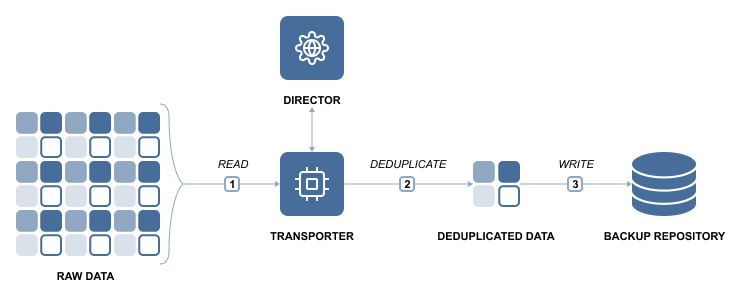A “bandwidth saver” typically refers to a feature, tool, or technique designed to reduce the amount of data transmitted over a network connection, thereby conserving bandwidth. This can be particularly useful in situations where network bandwidth is limited or expensive, such as in remote locations, on mobile devices with limited data plans, or in large organizations with many users sharing a network.
Bandwidth savers can take various forms, including:
- Compression: Data compression algorithms can reduce the size of files or data packets before they are transmitted over the network, effectively reducing the amount of bandwidth required to transmit them.
- Caching: Caching involves storing frequently accessed data locally so that it can be retrieved more quickly without needing to be retransmitted over the network. This reduces the need for repeated data transfers and conserves bandwidth. Read about Cyber Insurance Coverage Silverfort
- Content Delivery Networks (CDNs): CDNs distribute content across multiple servers located in different geographic locations. By serving content from servers that are closer to the end user, CDNs can reduce latency and bandwidth usage.
- Traffic Shaping: Traffic shaping techniques prioritize certain types of network traffic over others, ensuring that bandwidth is allocated efficiently and critical applications or services receive the necessary resources.
- Data Deduplication: Data deduplication eliminates redundant copies of data, storing only one instance of each unique piece of information. This can significantly reduce the amount of data that needs to be transmitted over the network.

- Protocol Optimization: Optimizing network protocols can reduce overhead and improve efficiency, leading to lower bandwidth consumption.
Understanding Bandwidth
Bandwidth refers to the maximum data transfer rate of a network or internet connection. It determines how much data can be transmitted in a given amount of time. With the proliferation of online activities such as streaming, gaming, and video conferencing, bandwidth usage has skyrocketed. Don’t Miss to Check Out Our Website: Byte Tech Solution
Challenges with Bandwidth Consumption
Internet Traffic Surge
The exponential growth in internet users and connected devices has led to a surge in internet traffic. This increased demand puts strain on existing network infrastructure, leading to congestion and slower speeds.
Streaming Services
The popularity of streaming services like Netflix, YouTube, and Spotify has further exacerbated bandwidth consumption. Streaming high-definition content requires significant bandwidth, especially during peak hours.
How Does Bandwidth Saver Work?
Bandwidth saver employs several compression and optimization techniques to reduce the size of data packets transmitted over a network.
Compression Techniques
Compression algorithms are used to compress data before transmission and decompress it upon receipt. This reduces the size of files without compromising their quality.
Data Optimization
Bandwidth saver also optimizes data transmission by prioritizing critical information and eliminating redundant or unnecessary data packets.
Benefits of Using Bandwidth Saver
Cost Reduction
By reducing data usage, bandwidth saver can lead to significant cost savings, especially for businesses with large-scale network operations.
Improved Performance
Optimizing bandwidth usage can result in faster internet speeds and smoother online experiences for users.
Enhanced User Experience
Bandwidth saver ensures that users can access content quickly and efficiently, even in low-bandwidth environments.
Applications of Bandwidth Saver
Bandwidth saver technology finds applications across various online activities, including:
- Web Browsing
- Video Streaming
- File Downloads
Implementing Bandwidth Saver Solutions
Businesses and individuals can implement bandwidth saver solutions through:
- Software Options
- Hardware Solutions
Considerations When Choosing a Bandwidth Saver
When selecting a bandwidth saver solution, it’s essential to consider factors such as:
- Compatibility
- Security Features

Future Trends in Bandwidth Optimization
The future of bandwidth optimization is poised for exciting developments, including:
- AI Integration
- IoT Devices
Case Studies
Company A: Bandwidth Saver Implementation
Company A implemented a bandwidth saver solution and witnessed a significant reduction in data usage and associated costs.
Company B: Cost Savings with Bandwidth Saver
Company B saved thousands of dollars annually by deploying a bandwidth saver solution across its network infrastructure.
Common Misconceptions about Bandwidth Saver
Quality Sacrifice
Contrary to popular belief, bandwidth saver does not necessarily compromise the quality of content. It optimizes data transmission while maintaining content integrity.
Limited Effectiveness
Some may perceive bandwidth saver as having limited effectiveness. However, advancements in technology have made bandwidth optimization more efficient than ever before.
Tips for Maximizing Bandwidth Savings
To maximize the benefits of bandwidth saver, consider:
- Regular Updates
- Monitoring and Adjusting Settings
Conclusion
Bandwidth saver technology plays a crucial role in optimizing data usage and improving internet performance. By implementing bandwidth saver solutions, businesses and individuals can enjoy cost savings, enhanced performance, and an overall better online experience.
FAQs
- What is bandwidth saver?
- Bandwidth saver is a technology designed to optimize and reduce data usage without compromising performance.
- How does bandwidth saver work?
- Bandwidth saver employs compression and optimization techniques to minimize the amount of data transmitted over a network.
- What are the benefits of using bandwidth saver?
- Bandwidth saver can lead to cost reduction, improved performance, and enhanced user experience.
- Can bandwidth saver affect the quality of content?
- No, bandwidth saver optimizes data transmission while maintaining content integrity.
- Are there any future trends in bandwidth optimization?
- Yes, future trends include AI integration and the use of IoT devices.
